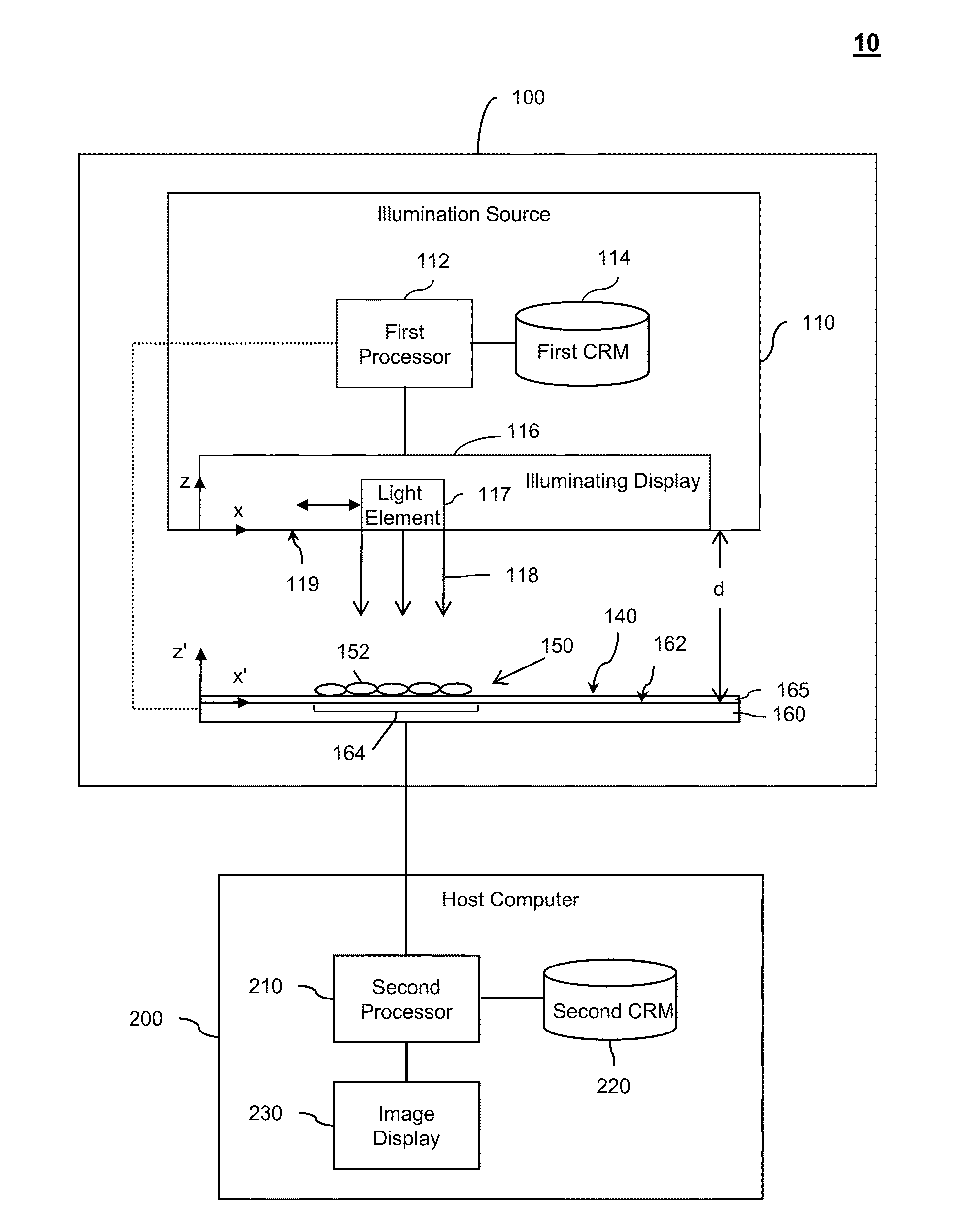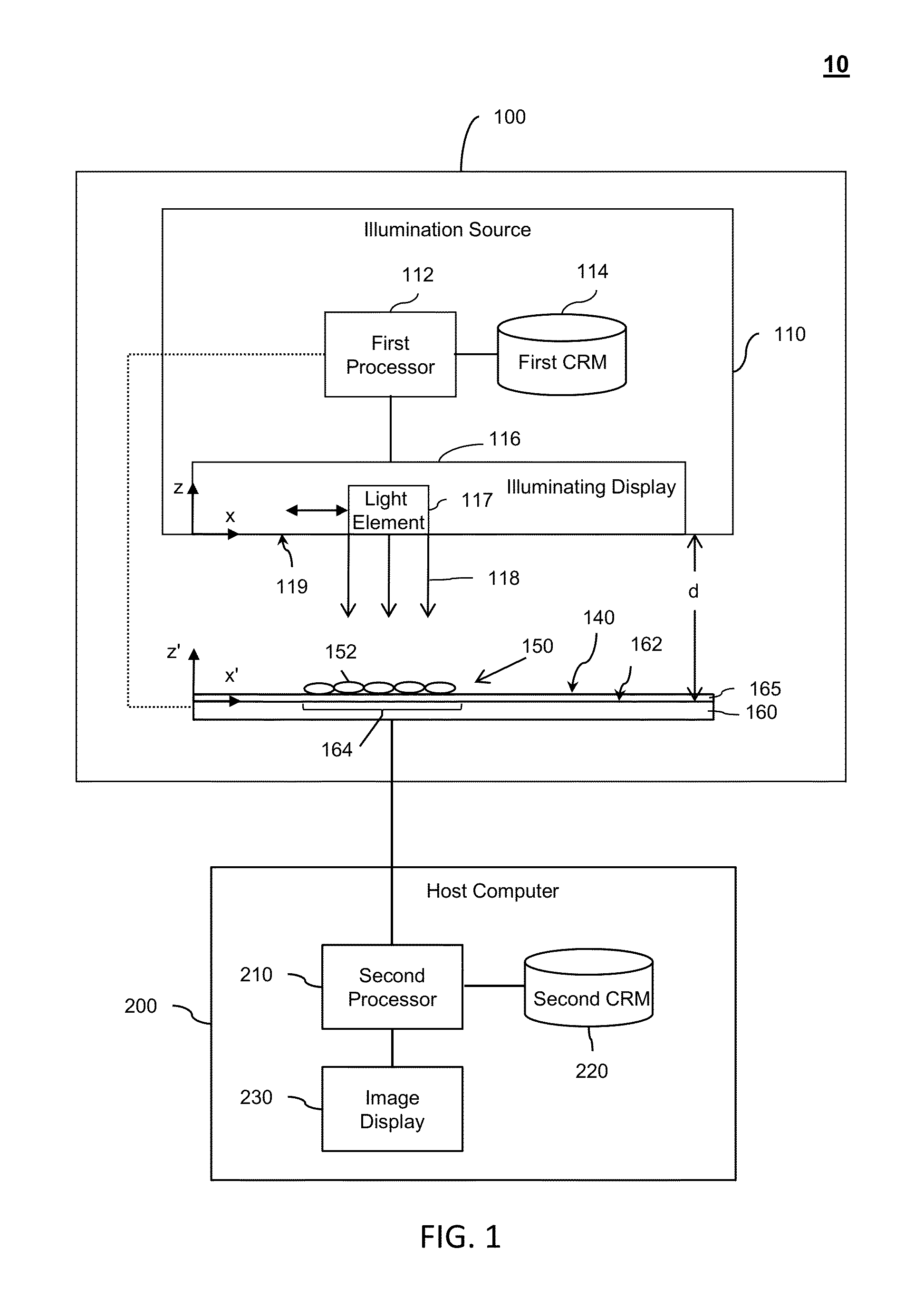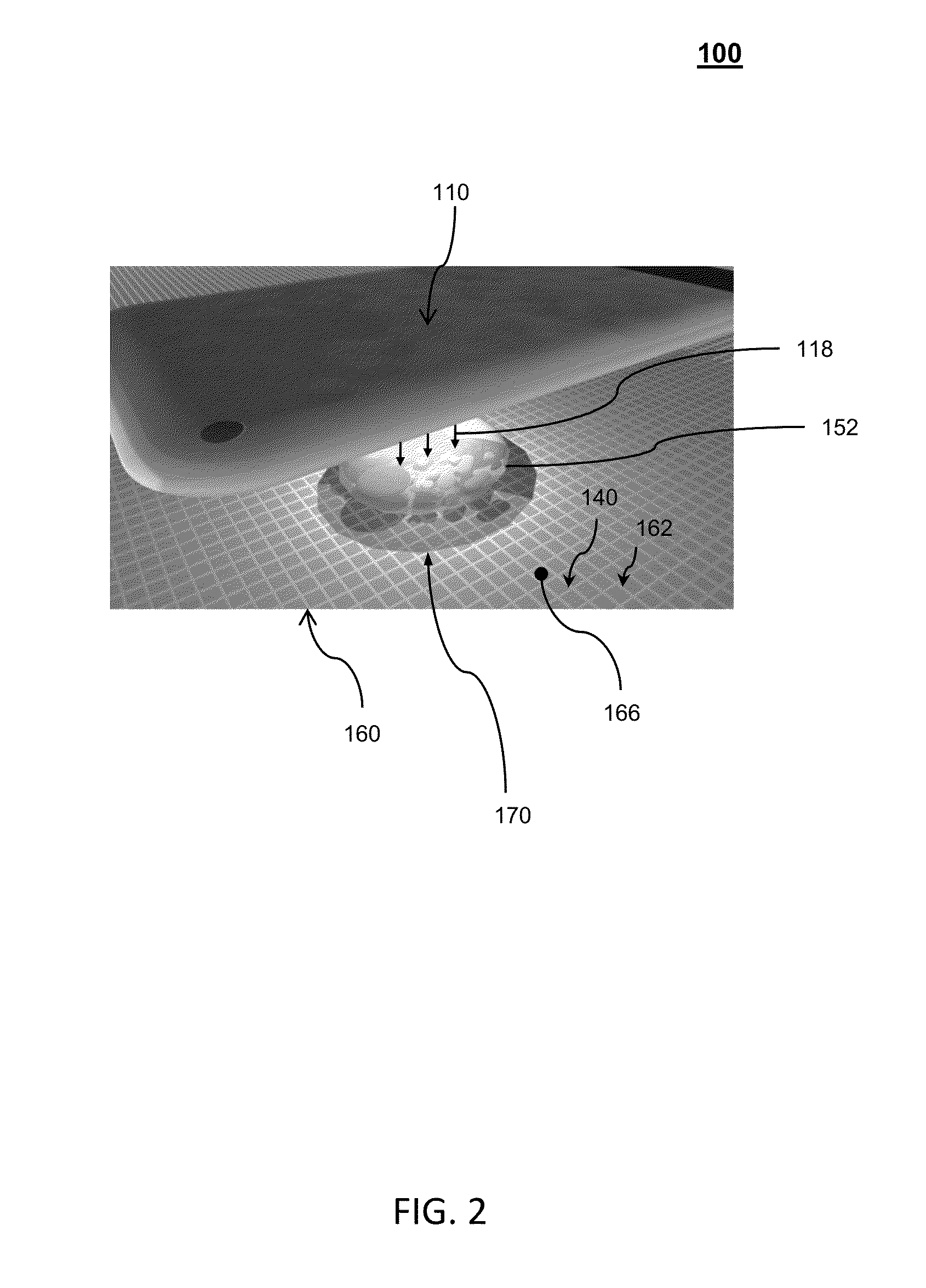Methods for Rapid Distinction between Debris and Growing Cells
a technology of growing cells and debris, applied in biochemistry apparatus and processes, laboratory glassware, instruments, etc., can solve the problems of difficult miniaturization, high cost, and bulky optics of conventional optical microscopes, and neither can work well with confluent cell cultures or any sampl
- Summary
- Abstract
- Description
- Claims
- Application Information
AI Technical Summary
Benefits of technology
Problems solved by technology
Method used
Image
Examples
Embodiment Construction
[0048]The need for a high-resolution, wide-field-of-view, cost-effective microscopy solution for autonomously imaging growing and confluent specimens (e.g., cell cultures), especially in longitudinal studies, is a strong one, as discussed in Schroeder, T., “Long-term single-cell imaging of mammalian stem cells,” Nature Methods 8, pp. S30-S35 (2011), which is hereby incorporated by reference in its entirety for all purposes. Some examples of experiments that would benefit from such a solution include: 1) the determination of daughter fates before the division of neural progenitor cells, as discussed in Cohen, A. R., Gomes, F. L. A. F., Roysam, B. & Cayouette, M., “Computational prediction of neural progenitor cell fates,” (2010); 2) the existence of haemogenic endothelium, as discussed in Eilken, H. M., Nishikawa, S. I. & Schroeder, T., “Continuous single-cell imaging of blood generation from haemogenic endothelium,” Nature 457, pp. 896-900 (2009), 3) neural and hematopoietic stem an...
PUM
 Login to View More
Login to View More Abstract
Description
Claims
Application Information
 Login to View More
Login to View More - R&D
- Intellectual Property
- Life Sciences
- Materials
- Tech Scout
- Unparalleled Data Quality
- Higher Quality Content
- 60% Fewer Hallucinations
Browse by: Latest US Patents, China's latest patents, Technical Efficacy Thesaurus, Application Domain, Technology Topic, Popular Technical Reports.
© 2025 PatSnap. All rights reserved.Legal|Privacy policy|Modern Slavery Act Transparency Statement|Sitemap|About US| Contact US: help@patsnap.com



